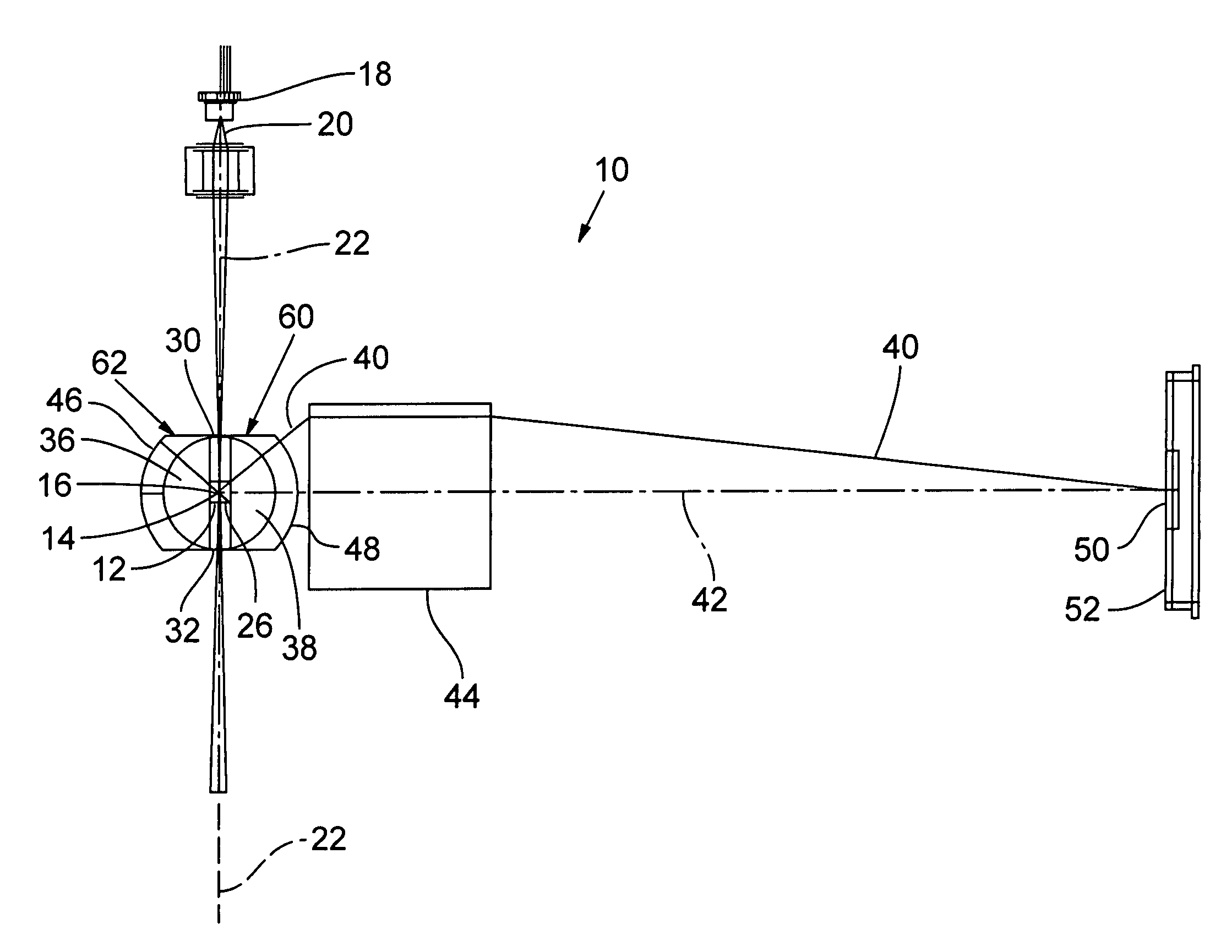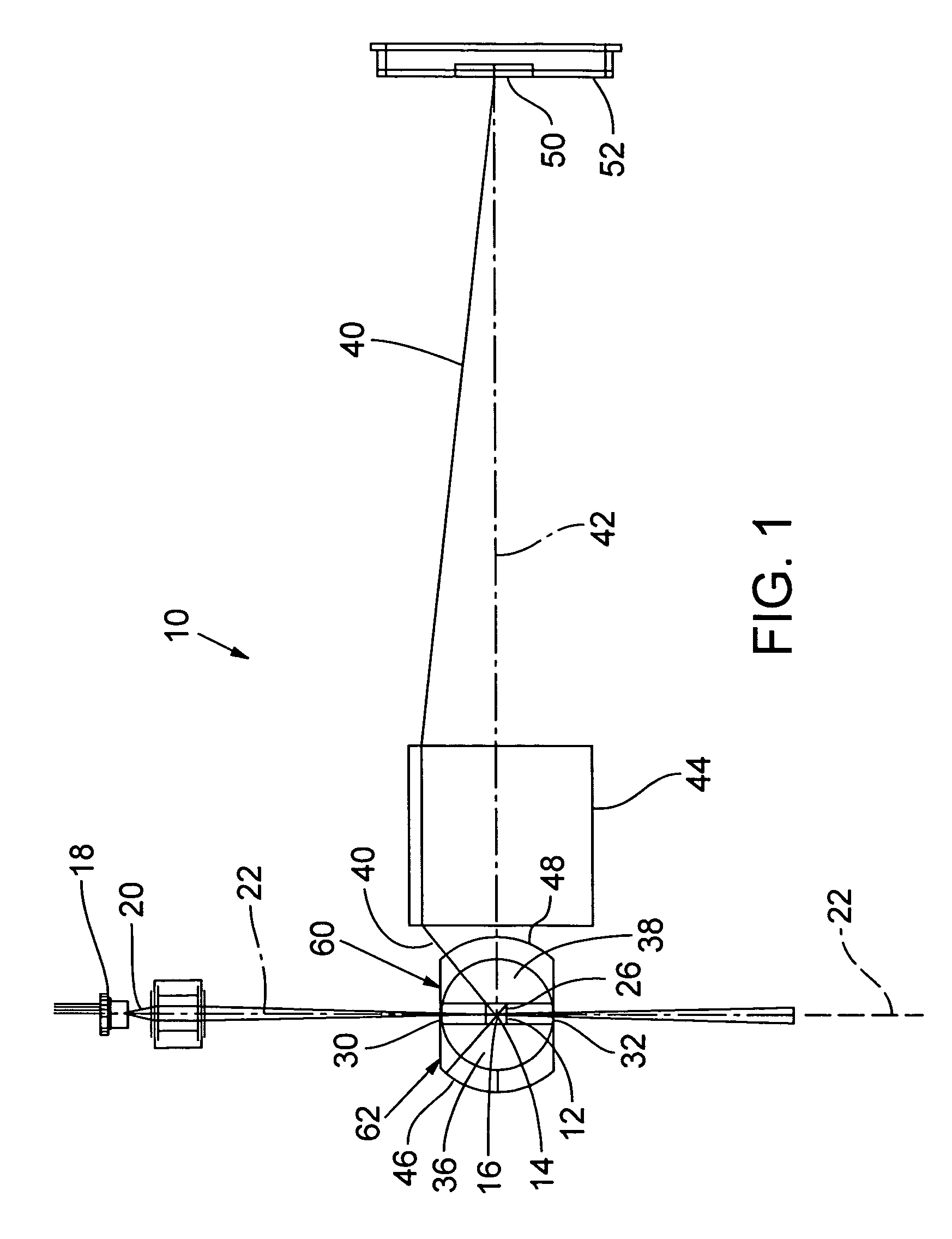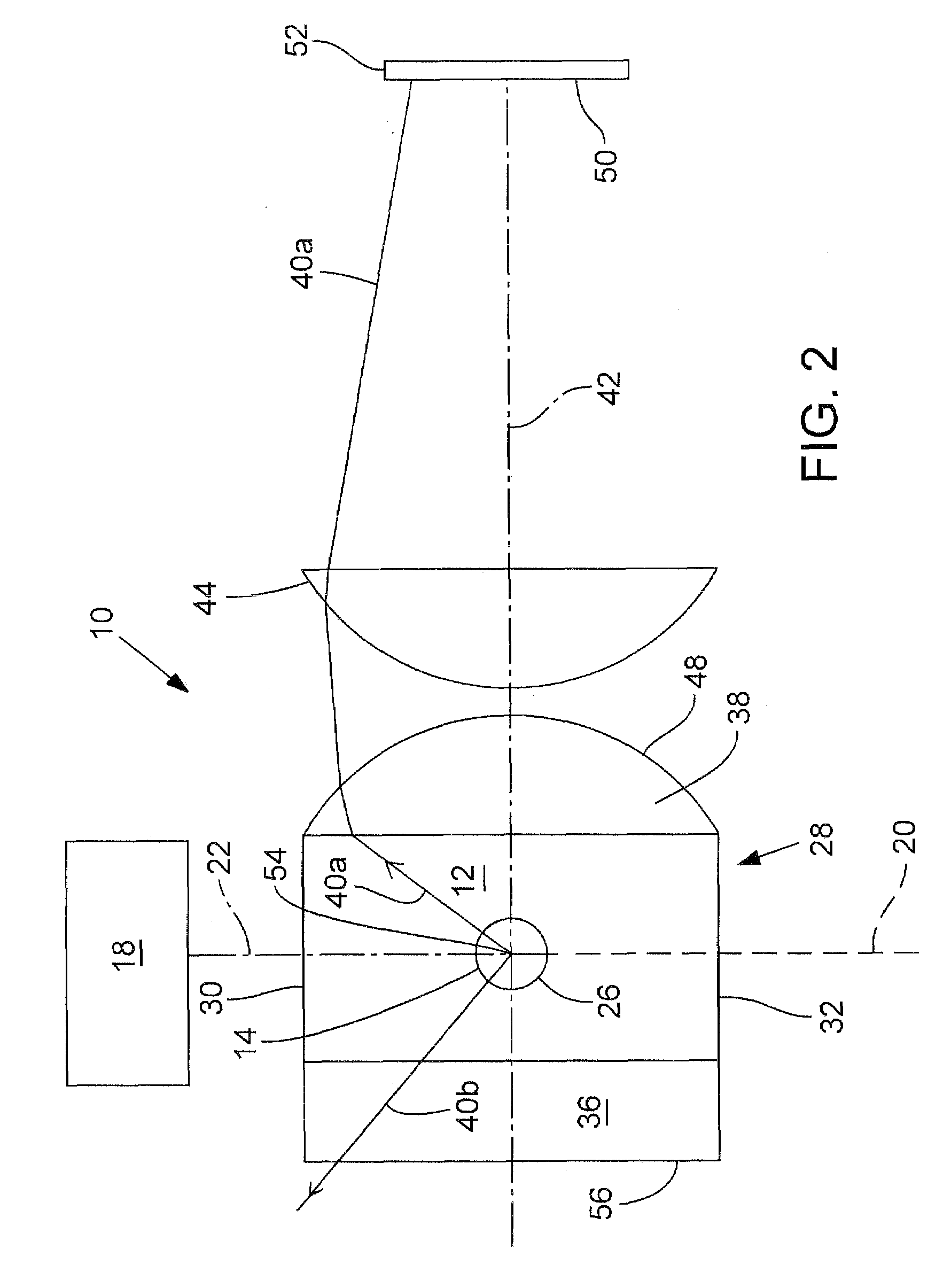Particle detection system implemented with an immersed optical system
a technology of optical system and detection system, applied in the field of optical particle detection, can solve the problem of increasing the magnitude of the pulse output signal generated by the detector, and achieve the effect of improving light collection and image quality
- Summary
- Abstract
- Description
- Claims
- Application Information
AI Technical Summary
Benefits of technology
Problems solved by technology
Method used
Image
Examples
Embodiment Construction
[0020]FIG. 1 is useful in explaining the configuration of an exemplary particle detection system 10. Particle detection system 10 includes a flow chamber 12 (extending out of the plane of FIG. 1) through which a particle-carrying sample fluid stream 14, such as gas (e.g., air) or liquid (e.g., water), flows in a flow direction 16 (out of the plane of FIG. 1). Particle detection system 10 also includes a light source 18 emitting a light beam 20 that propagates in a direction along an optical axis 22. Light source 18 is preferably a diode laser that is robust, efficient, and compact. Exemplary preferred light sources are gas, dye, and solid-state lasers.
[0021]Fluid stream 14 and light beam 20 intersect within the effective center of flow chamber 12 in a region called a view volume 26. View volume 26 is located within a unitary flow-through cell 28 that includes first and second spaced-apart, opposed optically transparent windows 30 and 32 through which light beam 20 propagates into an...
PUM
| Property | Measurement | Unit |
|---|---|---|
| transparent | aaaaa | aaaaa |
| volume | aaaaa | aaaaa |
| diameter | aaaaa | aaaaa |
Abstract
Description
Claims
Application Information
 Login to View More
Login to View More - R&D
- Intellectual Property
- Life Sciences
- Materials
- Tech Scout
- Unparalleled Data Quality
- Higher Quality Content
- 60% Fewer Hallucinations
Browse by: Latest US Patents, China's latest patents, Technical Efficacy Thesaurus, Application Domain, Technology Topic, Popular Technical Reports.
© 2025 PatSnap. All rights reserved.Legal|Privacy policy|Modern Slavery Act Transparency Statement|Sitemap|About US| Contact US: help@patsnap.com



